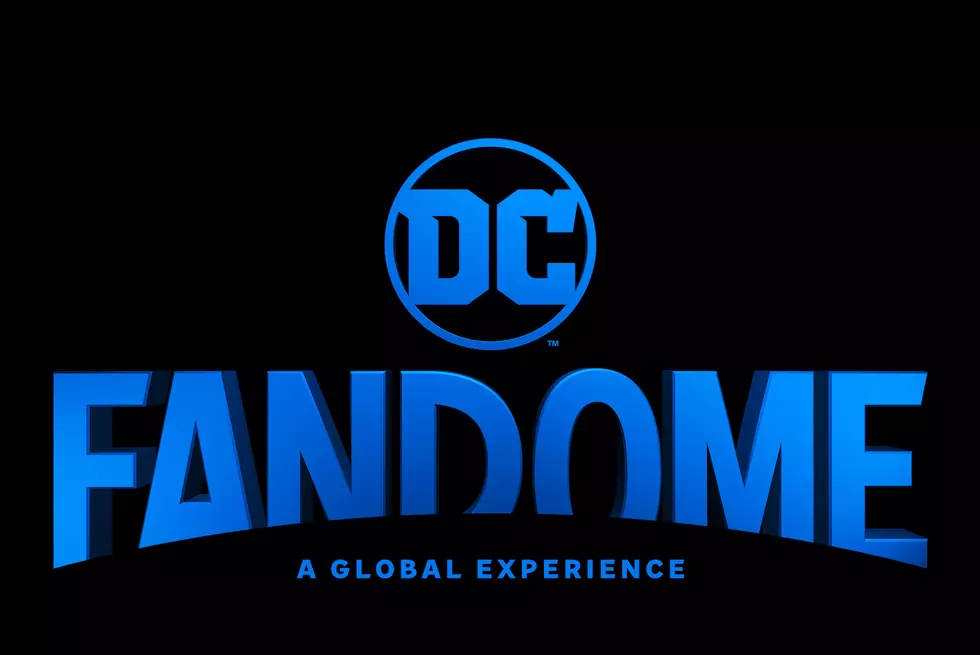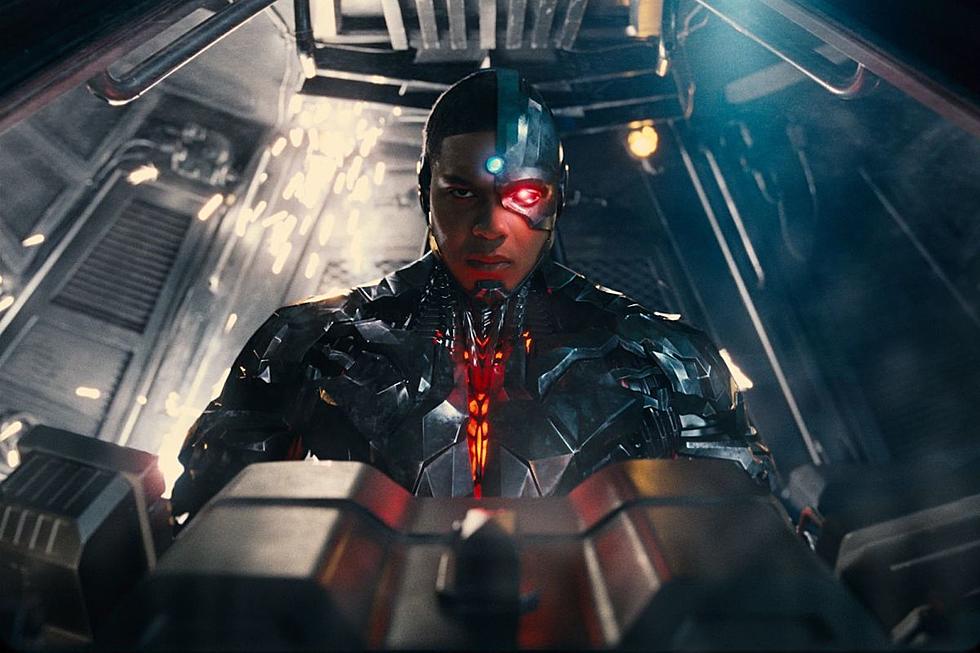
‘The Flash’ Comics Guide: On Your Mark, Get Set, Read
As you may have heard, a new Flash TV show began on the CW this week, spinning off from the network's popular superhero-esque series Arrow. And since nothing adds an air of legitimacy to the junk culture of comics quite like the approval of a respectable medium like television, there will doubtless be a number of comics readers, new and old alike, searching out Flash comics for the first time. But the Flash is a character that has been around in one form or another for about seventy years; how on earth would one know how to begin?
Don't worry: I'm here with a brief history of the Flash, plus a guide to the major runs (get it???) on the character by various creators who've shaped the hero's mythology over the years.
The Flash, perhaps more than any other character in DC Comics' stable, represents the strength of the legacy hero: the passing of the mantle from mentor to protege, with each successive version having their own strengths and weaknesses. It's hard to talk about the Scarlet Speedster without taking a look at the different versions of the Flash, which can be broken down into distinct eras.
- 1
GOLDEN AGE FLASH
The original Flash was a guy named Jay Garrick, created by Gardner Fox and Harry Lampert. He breathed in some hard water fumes and then ran around with a bucket on his head. He is pretty cool.
The bad news is, as far as I can tell, there is no in-print collection of Golden Age Flash strips (you can, however, read his first appearance—in Flash Comics #1, natch--digitally). The good news is, since—as I said—the Flash is all about legacy, he tends to show up plenty later on, both in the regular Flash title, and as a regular in such books as the Justice Society of America. (A version of Jay Garrick is featured in the title Earth 2, but he has no bearing on the history of the mainline Flash, as far as I'm aware.)
- 2
SILVER AGE FLASH
The popularity of superhero comics fizzled somewhat following World War II, and the Golden Age of the comics was over by the early '50s. However, by the mid-'50s, a couple of enterprising editors decided to revamp the superhero concept by adding in various sci-fi elements for the atomic age.
The book widely considered to have kicked off this new age—the Silver Age of Comics—was Showcase #4, the first appearance of the second Flash, Barry Allen. This version of the Flash got hit by some chemicals that got struck by lightning at his job as a police scientist (aka CSI) and decided to wear one of the like top five best superhero costumes of all time. This is the version we will see on the TV show (uh, with some caveats).
The Flash stories of the '50s and '60s were primarily created by John Broome and Carmine Infantino, who co-created this version of the character with Robert Kanigher, and while the early stories from this era can often be highly formulaic—even in comparison to other comics of the time—they introduce many of the key elements of the Flash mythos: the Rogues, Gorilla Grodd, Iris West, Wally West aka Kid Flash, the stretchy detective Elongated Man, and so on.
Furthermore, it is within the pages of the Flash that DC introduces the concept of its multiverse; the idea of Earth-2 being a plane of existence where all the Golden Age heroes lived and fought begins with Barry meeting up with Jay thanks to some savvy vibrating. This is a concept that has been at the center of most of DC's major even storylines, up to and including the currently running Multiversity.
Plus, you eventually get awesome stuff like this:
Boy, I cannot wait for that episode of the TV show.
If the silly inventiveness of the Silver Age is not to your taste, well, that’s your own cross to bear, I guess, but if you want to see the real roots of the modern Flash, there are a couple of ways to get these stories:
The Flash Omnibus collects the earliest adventures of the Flash from Showcase into his own title. This volume collects SHOWCASE #4, 8, 13 and 14 and THE FLASH #105-132 (the series resumed the numbering of the original Golden Age series) in color, in a big, fat hardcover. Now, even with Amazon’s pretty deece discount here, you may not want to drop sixty-plus bones on the Flash. In that case, you can get:
Showcase Presents: The Flash. This series of volumes contains the same material as the omnibus, but in black and white, on lower quality paper, but for way less money. While the omnibus (so far) only collects the first 30ish issues of Barry Allen’s adventures, there are four Showcase volumes of Silver Age Flash available (not technically in print as far as I can tell, but they’re all still available for decent prices on Amazon), which will altogether get you about 80-90 issues. These books are, in my estimation, the best value. But! If you really want to see this stuff in color, but don’t want to buy the Omnibus…
The Flash Chronicles collects, once again, the same material, but in smaller chunks than the Showcases, but in color.
Additionally, a select handful of issues of the Silver Age Flash are available on Comixology for mere pennies.
You have options, is what I’m saying.
- 3
ONE LAST HURRAH (for now) WITH BARRY ALLEN FLASH
Showcase Presents: The Trial of the Flash by Cary Bates and Carmine Infantino is the last (at the time) story of Barry Allen. While most Showcase volumes reprint Silver Age stories, this one collects a tale from the very end of the Bronze Age. This massive tale (unusually long, especially for the time) represents the final two years of the Flash before Crisis on Infinite Earths. This is the tale of Barry going on trial for the manslaughter of one of his greatest foes, the Reverse Flash. The story-telling will probably read as super old-fashioned to a modern reader, but if you’re interested in one of the major sagas in the life of the Flash, well, here you go. (If you want to get this one digitally, it starts with this issue here.)
Let me spoil an almost thirty-year-old story for you:
Barry dies in Crisis on Infinite Earths. You will notice I linked to an Ask Chris column rather than the actual book. Don’t worry about it. There is literally no reaction that a new reader would have to Crisis other than “What the hell am I reading and why the hell am I reading it?”
Here’s what you need to know: Barry dies saving literally everyone. He’s a big damn hero.
So that leads us to...
- 4
WALLY WEST FLASH
Taking up the mantle after Barry’s death is Wally West, the nephew of Barry’s girlfriend and later wife Iris West. Way back in the '50s stories, he miraculously got Flash powers in the exact same way as Barry, so Barry reluctantly makes him his sidekick, Kid Flash, who goes on to be a founding member of the Teen Titans.
The earliest stories of this incarnation of the Flash are written by Mike Baron with art by such artists as Butch Guice, followed by a run by William Messner-Loebs with art by artists including Greg Larocque. These issues are not available in print, but they are available digitally. Start Baron's run here, and Messner-Loebs's run here.
- 5
BEST FLASH
The best writer of the Wally West Flash is Mark Waid, who wrote the book for a long time (over one hundred issues, all told, not including work on spin-off titles like Impulse), with various artists, including Salvador Larocca and most notably Mike Wieringo, and some stories co-written with Brian Augustyn. Unfortunately, his run has been only sparsely collected in paperback.
Let me be clear: if you buy only from one section of this Flash comics list, make this that section. Waid’s Flash is the best Flash, period. The entire run is available digitally and starts here starts here, and here are the highlights:
Flash #62-65 - "Born To Run" by Waid, Greg Larocque, et al. A great intro to Wally and his history as Kid Flash. You can buy a used copy of the paperback collection here.
Flash #74-79 - "The Return of Barry Allen" by by Waid, Laroque, et. al. I believe this was just certified on War Rocket Ajax as the best Flash story ever, so there you go. You can buy a used copy of the paperback collection here.
Impulse #1-6 - "Reckless Youth" by Waid, Humberto Ramos, et al. Impulse is Bart Allen, grandson of Barry Allen from the distant future, come back to annoy Wally. This collection includes his introduction in The Flash, plus the first few issues of his solo series, which would include what Chris Sims (and ComicsAlliance editor Andy Khouri) have boldly claimed is the greatest single issue of all time. You can buy a used copy of the paperback collection here.
Flash #95-100 - "Terminal Velocity" by Waid, Wieringo, et al. This is the story that introduces the idea of the Speed Force, the source of the Flashes’ powers. It has one millions speedsters in it and is pretty awesome. You can be a used copy of the paperback collection here.
- 6
DID YOU KNOW GRANT MORRISON & MARK MILLAR WROTE THE FLASH?
A cool thing that happened one time is that Mark Waid and Grant Morrison & Mark Millar traded places on Flash and JLA for a few issues What this meant was we got a cool Adam Strange story from Mark Waid, and these stories from Morrison and Millar:
"Emergency Stop" by Grant Morrison, Mark Millar, and Paul Ryan. When a villain breaks both of Wally's legs, can the Flash (and friends) save the city from a wheelchair? (Spoilers: yes.)
"The Human Race" by Grant Morrison, Mark Millar, and Paul Ryan. This collection is pretty awesome. It features a story of the Flash racing Sonic the Hedgehog (basically) across the universe and then introduces the Black Flash aka the Grim Reaper for fast people.
Alternatively, these storylines are collected digitally starting here.
- 7
GEOFF JOHNS, PERHAPS YOU'VE HEARD OF HIM
The next major writer on the Flash is Geoff Johns, whom you may know as basically the dude at DC Comics for almost a decade now. Also a producer on the new television series, Johns' lengthy run is notable for its work fleshing out the characters of the Rogues. His work, with art primarily by Scott Kolins, is collected in three omnibus volumes.
You might also want to get Final Crisis: Rogues’ Revenge by Johns and Kolins. It is pretty good.
Alternatively, Johns's run on the Flash is available digitally, starting here.
By now you might be asking yourself, “Why, if there are all these good stories about Wally, is the new Flash show about Barry Allen?”
Well...
- 8
I'VE GOT SOME BAD NEWS
Due to the events of Infinite Crisis, Wally and his family go to an alternate reality. Bart (Impulse) becomes the new Flash. Then Bart gets killed. These stories are...well, I mean, just read the others ones I've already talked about instead.
Barry returns in Final Crisis (which is not very Flash-centric, but is awesome). Then even though there is still a perfectly good Flash still available in Wally (who has come back from that other dimension, obvs), it was decided that Barry should be the Flash again, but with an altered origin featuring more dead parents than previously. This, ultimately, will actually be the version of Barry we see on the TV show, rather than that one that got turned into a puppet a little earlier in this article.
If you are the kind of person for whom a comic's “continuity” is the most significant criterion, here are some books you can buy:
- 9
THE NEW 52 FLASH
And this literally leads us to the New 52, a line-wide DC Comics reboot which happened (in-canon) as a result of Flashpoint. The good news is that the New 52 Flash comics are actually pretty good, and the artwork is beautiful. Those stories are collected in these volumes:
Move Forward by Manapul and Brian Buccellato.
Rogues Revolution by Manapul and Buccellato.
Gorilla Warfare by Manapul and Buccellato.
Reverse by Manapul and Buccellato.Perhaps needless to say, these are available digitally.
The forthcoming volume five of this run marks the end of Manapul and Buccellato's work on the title before they scooted over to Detective Comics and a new creative team came on to the Flash, which would catch you up to today. The current team is Van Jensen, Robert Venditti, and Brett Booth. Their first issue is available digitally here.
If you read up through the latest issue, you will know literally everything there is to know about the Flash, and you can be that person at work who smugly explains all the background jokes in the previous night's episode.
More From ComicsAlliance









